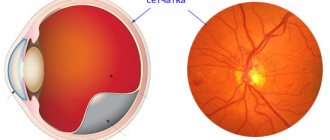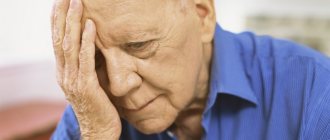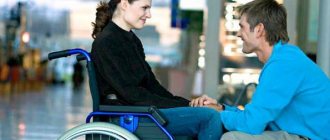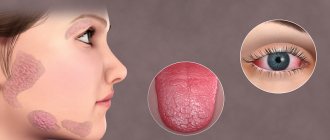An unusual disease in which a person is unable to control his own sleep and wakefulness is called “narcolepsy.” It comes from the Greek words narkē, meaning numbness, and lēpsis, meaning sleep.
This neurological disorder is also called paroxysm of intractable sleepiness or Gelineau's disease. This French neurologist first described this disease in the late seventies of the 19th century. For several years, Jean Baptiste Edouard observed a 38-year-old wine merchant who went to the doctor with his problem.
A man could fall asleep up to two hundred times during the day while eating, sitting in a theater chair at a performance, or while talking - starting to speak and “passing out” mid-sentence. During intense experiences and a surge of emotions, his drowsiness was accompanied by a loss of muscle tone, and he fell. His consciousness remained quite clear. Gelineau called this case cataplexy.
Doctor Samuel Brock (USA) in 1928 discovered another form of narcolepsy, which he called sleep paralysis. His patient, a twenty-two-year-old boy, suffered from attacks of drowsiness and catalepsy, but these were also followed by a temporary inability to move and speak. In this state, he experienced very plausible hallucinations, which were generally unusual for him.
Causes of a special illness
Narcolepsy is a fairly rare disease (affects 1 person out of 2 thousand). It develops mainly in 20-50 year old men, but can also appear in childhood. Despite its low prevalence, this pathology is very dangerous, because an individual can suddenly fall asleep at any moment and anywhere while performing some action. Such an attack cannot be controlled and therefore interferes with normal activities - it is impossible to properly study, work, do everyday activities, or drive a car. All this negatively affects personal and social life. Children with this disease are developmentally delayed.
The sensations of those suffering from narcolepsy are similar to those experienced by people who have not slept for two days, and this reduces the quality of life.
Researchers cannot explain the exact cause of drowsiness syndrome, since it has not been studied enough due to its uniqueness. However, it turned out that psychological and psychiatric problems are not to blame.
Currently, the following factors for the development of the disease are called:
- heredity;
- lack of special genes of hypocretins (orexins) - neurotransmitters that ensure the transmission of signals to sleep and awakening in the brain;
- dysfunction of the immune system;
- overwork;
- severe infections;
- skull injuries;
- viral diseases;
- malfunctions of the endocrine glands, including the pituitary gland.
Sleepy during the day and at night, narcoleptics often have trouble falling asleep or constantly wake up. This is associated with abnormalities in the areas of the brain that regulate the main stages of sleep: the rapid phase occurs earlier than normal, and the deep phase is absent altogether.
Why does a person fall asleep while walking?
The human brain is responsible for sleep, its normal course and deviations; the causes of problems must be looked for there. Recent research by scientists has shown that sleep disorders occur due to a lack of orexin. Orexin or hypocretin is a brain neurotransmitter that is responsible for wakefulness. In people suffering from this disease, orexin is found in reduced amounts in the cerebrospinal fluid. For what reasons its production decreases is unknown.
Hereditary predisposition is considered as the main hypothesis for the development of pathological drowsiness. Certain chromosomes provoke the destruction of neurons, their production of orexin in the hypothalamus slows down, disrupting the structure of sleep - the ratio of slow and fast phases. The fast phase, which is in excess, is ahead of the norm. Reduced activity of the activating part of the brain contributes to the appearance of REM sleep during wakefulness, manifesting itself as symptoms of falling asleep in an unexpected place at the most inopportune time.
According to scientists, hereditary causes are not enough to disrupt the structure of genes; there must also be factors that provoke a narcoleptic state, but these are only assumptions. The mechanism of development is under study. Possible influencing factors include:
- traumatic brain and cranial injuries of varying severity;
- stress leading to excess emotions, positive and negative;
- infectious diseases;
- dysfunction associated with hormonal changes.
Article on the topic: Antiarrhythmic drugs - a list of the most effective with a description of the composition, indications and prices
Manifestations of paroxysm of irresistible drowsiness
Symptoms of the disease first appear in adolescents or young adults, either immediately, or worsen gradually as they grow older:
- Strong desire to sleep during the day, despite a sufficient amount of sleep at night. Such irresistible drowsiness interferes with normal activity, as it is accompanied by lethargy, foggy thinking, apathy, and difficulty concentrating. A person feels “broken,” “squeezed like a lemon,” and constantly tired. He is not in the mood, he is constantly irritated, cannot remember important information, and loses motivation. At any moment and under any circumstances, the patient can fall asleep, and such attacks occur several times a day. It is easy to wake him up and after waking up he, just for a while, feels rested.
- Disturbance of normal sleep at night - frequent awakenings or insomnia.
- Cataplexy – with strong emotions (surprise, laughter, joy, rage, etc.) a sudden loss of muscle tone occurs. A person may fall due to weakness in the legs, arms become numb, and the head “falls.” Such an attack can last a moment or last half an hour.
- When falling asleep or waking up, terrible, very believable hallucinations arise, visual or in the form of sensations and sounds. They scare and even threaten.
- Sleep paralysis - waking up, the patient cannot move or say anything, but thinks quite adequately.
- Automaticity – performing actions “on autopilot”. A person may fall asleep but continue what he was doing while awake without realizing it. This is dangerous, since sleep can occur while driving a vehicle, cooking, etc.
People suffering from narcolepsy also complain of memory loss, double vision, and headaches.
If you have the above symptoms, you should consult a specialist for diagnosis and subsequent treatment. Unfortunately, it is impossible to completely get rid of this neurological disorder, but it is quite possible to correct it and thereby improve the quality of life.
Symptoms of Narcolepsy
The presence of pathology can be determined by the following signs:
- excessive daytime sleepiness;
- sleep paralysis;
- hallucinations, frightening dreams;
- snoring - it is provoked by relaxation of the throat muscles and blockage of the airways;
- involuntary constant movements of the lower extremities (less commonly, the upper);
- deterioration of memory, focusing;
- lack of energy;
- insomnia;
- sudden muscle weakness.
In children, among the manifestations of narcolepsy:
- irritability;
- hyperactivity;
- unsteadiness of gait;
- constantly half-closed eyelids.
Diagnostic features
Only a neurologist - somnologist, that is, a doctor specializing in sleep disorders, can make an accurate diagnosis of narcolepsy. It will not be possible to do this right away, since there are quite a lot of violations in this area for various reasons. Some doctors may not even remember the presence of such a disease as paroxysm of irresistible drowsiness - it is so rare.
First of all, the specialist will need to assess the general condition of the patient, which makes it possible to exclude other ailments that have similar symptoms. To do this, the doctor will study the medical history and conduct comprehensive studies in the somnology laboratory.
There are two tests to determine what kind of pathology a patient has:
- Polysomnography. Small electrodes are attached to the skin of a person in an isolated room using a jelly-like substance. They allow you to record intracerebral waves, heartbeat rhythm, eye movements, and muscle activity.
- The MSLT test is done after the previous one, but on the next day. Electrodes are also attached to the patient's body and the patient is allowed to fall asleep for 20 minutes. Several such attempts are made, maintaining an interval of 2 to 3 hours.
The results of these studies will provide data on the course of the disease and determine whether the presence of narcolepsy can be confirmed or whether the patient is affected by another disease associated with sleep disturbances and similar symptoms.
In addition to the above-mentioned procedures, an encephalogram of the brain is also necessary for this.
Symptomatic treatment
First of all, patients with narcolepsy are advised to lead a certain lifestyle:
- give up “heavy” foods, caffeine, alcohol, smoking;
- observe a sleep schedule - reduce daytime sleep, increase nighttime sleep, go to bed and get up at the same time;
- doing physical exercise;
- plan a schedule of your actions so that while performing certain actions (for example, driving a car) you are especially vigilant and careful. It is better to have someone nearby during this period.
To control sleep disturbances, drowsiness, and avoid hallucinations, the doctor prescribes certain medications to the patient - stimulants, antidepressants, etc. His recommendations should be strictly followed and any problem or change should be reported immediately.
Good news came out not long ago. Based on scientists’ assertion that one of the causes of narcolepsy is a lack of orexin in the brain (discussed above), a nasal spray containing it was developed. So far the drug has only been tested on monkeys, but after using it the animals were alert even with a lack of sleep. The military is interested in the development, but there is hope that it will reach the sick!
Behavioral therapy is also indicated. Family members of a person suffering from narcolepsy, as well as colleagues and superiors, should know about his illness - the attending physician should be the first to inform about this, and the patient himself should inform the rest. This makes it possible to avoid a lot of misunderstandings - those around you will understand the patient’s behavior and not think that he is deliberately shirking work, is lazy, becomes depressed, or suffers from a mental disorder.
Relatives will support the narcoleptic relative and help cope with the symptoms of the pathology. As for work, the employer, if possible, will create certain conditions if it is interested in such an employee. If not, then the patient will have to look for another source of income where his problem will not interfere with the performance of his official duties.
Parents of a child with such a disease should warn teachers about it. Teachers will definitely take measures to ensure that the student is not ridiculed, the educational process does not suffer, etc. The diagnosis will not be an obstacle to good performance and education.
there is hope
Of course, this is a disease that cannot be ignored. Those who suffer from it should choose their profession with special care. They are contraindicated from working at heights, with moving mechanisms, requiring increased attention, or night shifts. During an exacerbation, it is necessary to have the opportunity for short sleep breaks of 15–20 minutes at 2–3 hour intervals during the day.
At the beginning of this century, a scientific discovery was made that finally helped to understand the nature of this mysterious disease. Researchers have found that patients with narcolepsy lack orexin, a special hormone found in the brain. American scientists have developed a nasal spray that contains the hormone orexin A. During experiments (the drug was tested on monkeys), it turned out that after its injection the animals felt great, even if they did not sleep enough. Naturally, the development immediately aroused interest among the military. There is also hope for patients with narcolepsy: perhaps the day is not far off when this disease will no longer be incurable.
Things to keep in mind
Narcolepsy, unfortunately, accompanies a person throughout his life; its symptoms either stabilize or become more severe. Only through treatment and following the recommendations of a somnologist can you make attacks less frequent and weaker, and lead a completely normal socially active life.
And one more thing... Researchers recently found out that the great Leonardo da Vinci suffered from such a disease. She struck him after a three-year stay in the cellars of the Palazzo Ducale (Doge's Palace) in Venice. The thinker, engineer, artist, ahead of his time, managed to turn illness to his advantage. He built a wheelchair and it was always next to him - so the attacks of sleep did not take him by surprise. Leonardo almost never parted with a pencil and paper, so immediately after waking up he drew what he had imagined. So narcolepsy contributed to the creativity of a genius.











